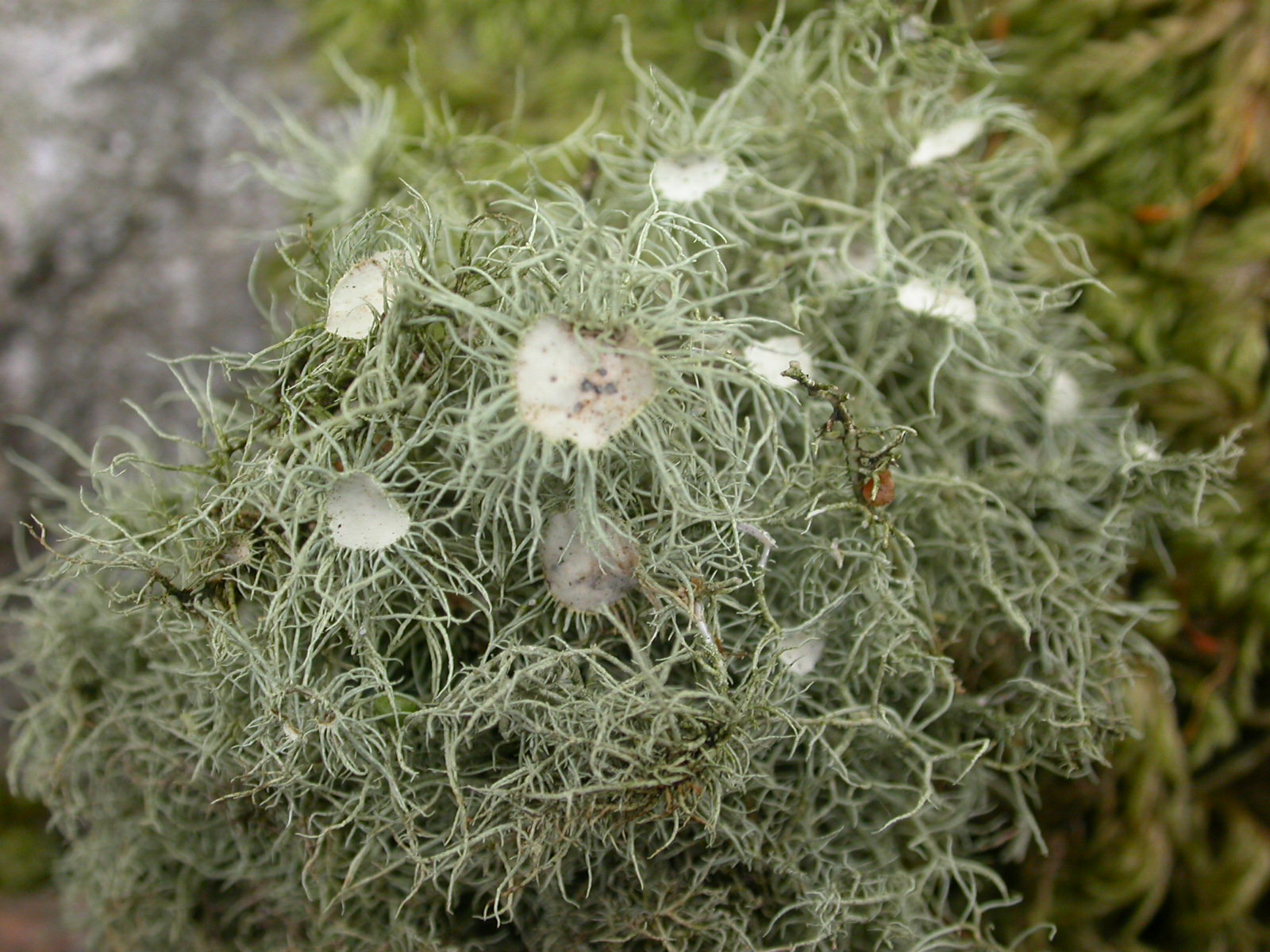Usnea is a lichen or a cross between an algae and a fungus.Technically it is a fruticose lichen, or a hanging hair lichen. It is sometimes referred to as "old man's beard," and is another of those wild things, that once you have seen, it, you will always remember it. While usnea is not exactly an herb, I am lumping it into that category, because, it is where my own head files it when I think about it, and since my knowledge of fungi, algae, and lichen is very little ,with the exception of usnea, it doesn't get its own category.
Of course , as with almost all of the wild things, I have to give the FDA/USDA, protect us all type of warning. Eating usnea in large ,unrealistic quantities is NOT recommended, as it can cause liver failure. Several years back, it was found that the usnic acid in the usnea, had weight loss qualities. Companies began making a fix-me pill of it and when studies were done, some of the fix-me pill takers had liver issues. Shocking, ain't it? The bottom line, as always, is use common sense with all wild things, do not go nuts and see how your own body reacts to each before deciding to use it in any way in your personal pharmacy.
Usnea is found all over the world and there are thousands of varieties but the Creator of things gave us a very easy to remember way of identifying the sort we can use. Usnea has a white core going through its always round main trunk . If you gently pull it apart, you will see a white core, almost like a very thin strand of elastic, you know the type I mean ladies, the ones that come loose on old style underweenies. Usnea grows mostly in the trees and looks much like Spanish moss, however, when you pull moss apart it will have a black core. Usnea resembles hair or a scruffy looking old mans beard. Sometimes, there is just straight hair and sometimes they have little ,dangly, doodads(as in picture) on the ends of the strands. Different regions have different varieties, learn yours. Usnea grows up in the trees, thankfully, limbs fall making collecting it much easier. It also stays one color all year and does not have much color variation. There are a couple others out there but for safety sake and ease, look for the basic green. Nutrition wise, it is made up of about96% carbohydrates. It's nearly all food and is high in Vitamin C. Usnea is also about half antibiotics which is what makes it such a good wild thing to know.
Medicinally speaking, in Native American traditions Usnea represents the North and maintains the lungs of planet Earth. In those traditions Usnea has a sacred relationship with the trees, helping to protect them against infections. In people it has much the same qualities.It can be used as an antifungal- againsts ringworm, athletes foot and yeast infections. as an antiparasitic it is effective against Trichomonas and Chlamydia in vaginal infections. As an antibacterial it is effective against gram positive bacteria in local or systemic infections. It also works to boost the immune system in cases such as acute and chronic lung infections such as-pleurisy, TB, pneumonia, colds, flu and other types of poor immune function.
Usnea can be dried and ground to a fine powder and applied directly to wounds. It can also be made into a decoction and used with compresses topically, and can be incorporated in to salves, lotions and creams. Again, test a small area before making up a gallon and see how your body deals with it. Some people have a small rash reaction from directly applying it. It can be made in to a tea, however, its healing property do not dissolve well in water and it has next to no flavor. Most often , usnea is tinctured and used in that way. It can also be nibbled on in very small quantities. By small, I mean a pea sized chunk a couple times a day. To eat it in any amount of quantity, one would need to leech off the acids. Surprisingly it does not taste too bad, but is certainly not something I would want to eat an entire bowl of unless I simply had to.

Thank you!!
ReplyDeleteHow would it be used against cold / flu?
ReplyDelete